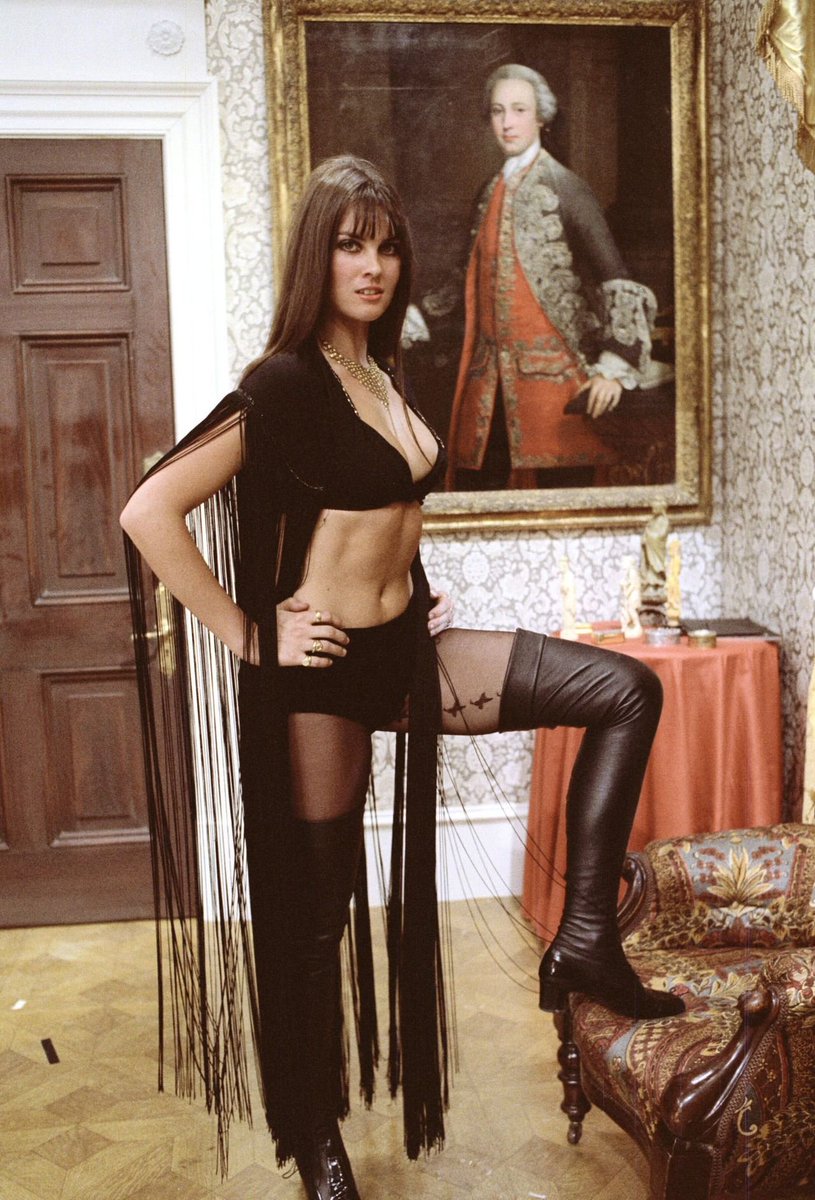As it's #WorldGothDay there's really only one tale to tell; a legendary Hammer Horror that mixed the groovy with the ghoulish.
This is the story of Dracula: 1972 A.D...
This is the story of Dracula: 1972 A.D...
Peter Cushing had a long career in drama and horror. He played the lead in the BBC's 1954 adaptation of Orwell's 1984. Quatermass author Nigel Kneale wrote the screenplay and the Room 101 scene was apparently so horrific one viewer died of shock. 

Christopher Lee had took a more unusual route into acting. He was (probably) a member of the SAS during WWll; he always declined to discuss this. He did fight at Monte Cassino and was a post-war Nazi hunter in Vienna. 

Christopher Lee and Peter Cushing had previously appeared together in the 1958 film Dracula, based on the original Bram Stokes novel. The film was well received and set the template for future Dracula movies. 

But it was the success of another vampire film, Count Yorga (1970), that prompted Warner Bros to commission a modern Dracula story from Hammer Films. The timing was fortuitous... 

In 1970 Britain's tabloid press was full of tales about a sinister ghostly figure - 'The Highgate Vampire' - and bizarre occult rituals taking place at the famous North London cemetery. Two rival vampire hunters, Sean Manchester and David Farrant, fuelled the stories. 

Writer Don Houghton used these ideas to bring the Dracula story up to date, and try to inject fresh blood into what was then seen as an old-fashioned and period story. Christopher Lee wasn't a fan of having a modern-day Count, but production went ahead. 

The Dracula: 1972 A.D. story starts in 1872, as Count Dracula and vampire hunter Lawrence Van Helsing fight to the death atop a movie carriage. Both are later buried nearby by locals. 



A century later a groovy gang of Chelsea hippies leaves their swinging party to take part in a black mass at an abandoned church, which brings Dracula back to life. 

Leader of the satanic groovy gang is Johnny Alucard, the descendant of the man who originally buried Dracula. Johnny wants to bring Dracula back to life so that he can gain immortality himself. 

Also in the group is Doctor Van Helsing’s great, great grand daughter, Jessica. Her grandfather Lorrimer Van Helsing is an occult expert, although Jessica refuses to believe in such nonsense! 

In the end Johnny Alucard is killed by running water - he's pushed into a bathroom shower - and Dracula is finally finished off in a pit of sharpened stakes. "Rest in Final Peace" appears on screen as Van Helsing leads Jessica away. 

Christopher Lee was cast as Dracula, with Peter Cushing playing both Laurence and Lorrimer Van Helsing. Stephanie Beecham took on the role of Jessica. 

Dracula: 1972 A.D. was also Caroline Munro's Hammer debut, and convinced her to focus on a career in acting rather than modelling. 

Location filming took place on the King's Road, Chelsea and in Notting Hill. Former Manfred Mann member Mike Vickers composed the rather funky soundtrack and early electronic group White Noise performed the main theme “Black Mass: An Electric Storm in Hell."
Critical reception for Dracula 1972 A.D. was not great: many saw it as the low-point of the Hammer Dracula series. Swinging hippies were also out of date by 1972, and the funk soundtrack seemed out of place. 

However there are many great things about this film, not least the fight scenes between Peter Cushing and Christopher Lee. It was a worthy attempt to update the Dracula story and it's also pretty fun to watch. 

The 1973 follow-up movie The Satanic Rites of Dracula only happened due to contractual obligations. "I'm doing it under protest" said Christopher Lee, "I think it is fatuous!"
But that's a story for another time. Happy #WorldGothDay everybody...
But that's a story for another time. Happy #WorldGothDay everybody...

• • •
Missing some Tweet in this thread? You can try to
force a refresh






















